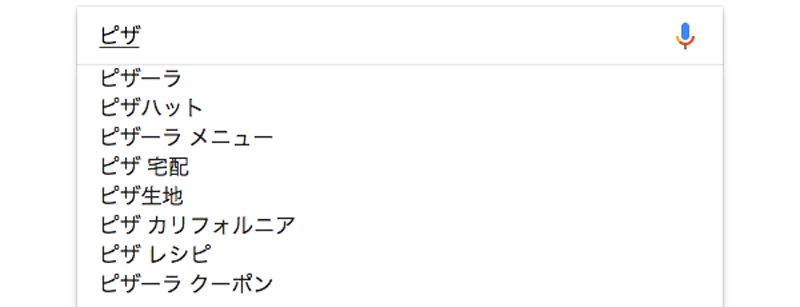This article lays out our methodology for doing multilingual SEO keyword research for Japanese websites. The process can be used for virtually any language but there are a few things we’ve highlighted that must be considered for SEO in Japanese. If you’ve already got your keyword research covered, be sure to check out our guide on organizing your website for multilingual SEO to get your site setup perfectly. If you still have any questions about SEO in Japanese or English, check out our SEO Services or get in touch. Anyway, on to the process!
#1 Keyword Brainstorming

All ideas are worth jotting down, go wild with your brainstorming!
Before doing any external keyword research we start with our client and our own team. The client knows the product best, so we gather as much information as we can from them and then start a brainstorm session from that. This is usually an offline affair, just pen and pad, getting as many raw ideas as possible for keywords and phrases. It’s best to go general and broad for this stage, as this just serves as a basis for research which we’ll narrow down later.
Each Language Needs Its Own Session
For multilingual SEO, it’s important do separate brainstorming sessions for each language, and not to base one completely off of the other. There may be terms that work well in one language, but don’t translate well in the other. Be sure to treat each translation as a completely separate website, with unique copy and keyword strategies for each version.
Native Speakers are Essential
When doing Japanese SEO research, it’s important to include native speakers with the brainstorming session. Many SEO terms are casual and sometimes don’t even make grammatical sense, but these seemingly odd terms are often valuable because they are the most common and natural phrases that people search for.
For Japanese SEO, sometimes the most natural keywords include roman characters or specific combinations of the language’s three writing systems. For that reason, we highly recommend working with native speakers for the most effective results.
#2 Expanding the Keyword List

Nicknames like "Todai," for Tokyo University can be hidden keyword gems with unique results you can sneak into
After creating the original brainstorm list, we use some online tools and Google search itself to find similar or related terms to the ones that are already selected. Often we can find some great keywords that are just a few words off or arranged differently than our original guesses.
Localize The Keyword List
We also add localized keywords to phrases to enhance targeting and relevancy. When optimizing a page/site that is targeted to a geographical location, add as many local terms to the keyword lists as possible. We typically add names of neighborhoods, cities, regions, countries, or anything that highlights a local area. (i.e . One of our clients owns and operates student housing facilities, so we searched for keywords that included the names of all universities that were close to the facility)
Personalize The Keyword List
Personalized keywords are also great additions to keyword lists. They help attract readers who are most likely to be interested in the product and/or content of the site. Terms such as; men’s, women’s, kids, adults, beginners, and experts can help to narrow down targeting. The more direct and targeted the keywords are, the better chances they have for conversion. Longer, targeted keywords tend to be less competitive than shorter ones as well.
colloquialize the Keyword List
When doing research for SEO in Japanese or English, be sure to look out for nicknames and casual names of places and things. A Japanese example of this is Tokyo university. The school is typically called Todai (short for Tokyo Daigaku) and many people are searching for this term in addition to Tokyo University. We’ve found that nicknames and unofficial names provide a great chance to rank on keywords that are still popular yet not as competitive as the proper terms.
After all of this brainstorming and expansion is finished, combine the first list of general keywords with the second list of personalized and localized keywords to create full keyword phrases. There are ways to automate this process but be careful to weed out the terms that end up being combined in unnatural and strange ways when creating the combined list.
#3 Test Keyword Combinations For Search Popularity

Google adds spaces between Japanese words in suggestions, but keywords without spaces are considered the same.
After creating as many keyword combinations as possible, check the popularity of each term and eliminate all of the keywords that people are not searching for. This process should result in a smaller list of keywords that have actual search volumes and activity. This is where we stop building the list and start chipping away to get to the most valuable keywords. There are a few matters that can come up with Japanese keyword research though.
How To Handle Spacing FOR SEO IN JAPANESE
When Japanese people type, they typically don’t put spaces between words in a sentence. If they do, they usually use Japanese full-width spaces, rather than half-width spaces. (The spaces between all words in this English blog are half-width). For some reason, when Google offers suggestions in the search box, they often add a half-width space between Japanese words. This can be very confusing to someone doing SEO research in Japanese, but from our experience there doesn’t seem to be a significant difference between Japanese keywords with or without spaces. Actually, finding keywords that have spaces between them could be a sign that they are more commonly found as suggested keywords, rather than being typed in directly.
Don’t Stress on Word Order
As for word order, It’s not essential to use the keyword in the exact order unless the meaning is changed by the different order. For example, “Student Housing Tokyo” and “Tokyo Student Housing” will likely be registered as the same search query in Google. Contrarily, “English Textbook” vs. “Textbook English” should yield different results since the meaning of those two terms is different. Be aware of this in English and Japanese, and test it out to see if Google’s search query has picked up the nuance of the word order or not. We suggest to focus on the most popular combination if order doesn’t matter, but always strive to maintain the most natural sounding copy above all else.
#4 Final Keyword Expansion: Brainstorm and Vetting
We usually do one more final brainstorm session after we’ve narrowed down a list just to be sure we haven’t missed something. This time we look at all of the terms that we have found with good search activity to see if there are any new combinations we can make, or any expansions that we missed the first time around. If we create new ideas from this list, we go through step 3 one more time with the new ones.
#5 Keyword Implementation
After finalizing the keywords, it’s time to get them up and onto the site. We’ve got another article with some great advice about implementing English and Japanese SEO keywords into your multilingual website. Please check it out to learn more about that process or drop us a line and we’d be glad to help you out.